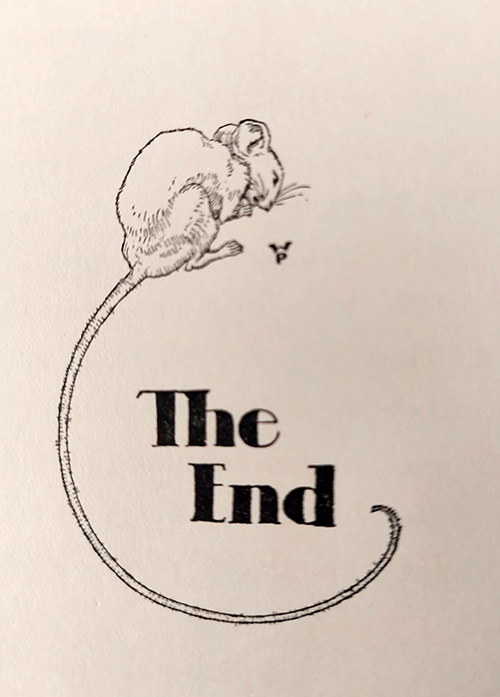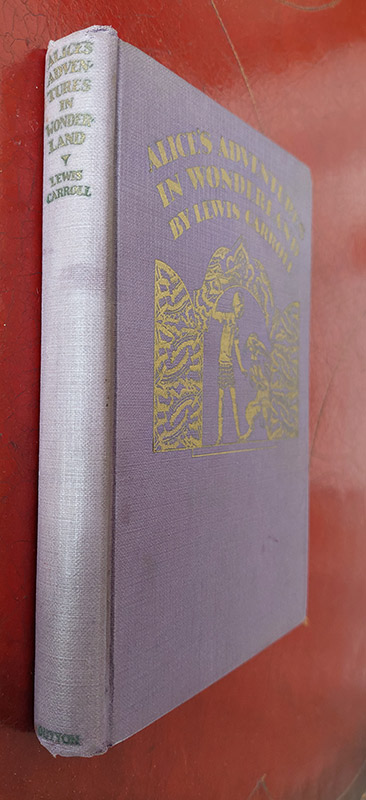Ah, the roaring twenties!
Willy Pogany, or Vilmos András Pogány, was an Hungarian illustrator, known for his art nouveau style of children’s and fables illustrations. He moved from Hungary, to France, and then England, and finally to the USA.
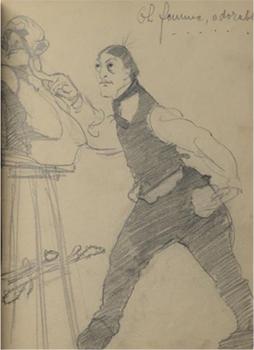
Willy Pogany – Self portrait
Pogany’s Alice (1929) is adorably nicknamed, the “Flapper Alice”. While you can certainly find traces of naturalistic art nouveau style, that defined most of his earlier work, his Alice, is very much in-line with the Zeitgeist of 1920’s. Modern thought, and women liberation, represented by the heroine – Alice. Read about Flappers, an icon of the 1920’s.
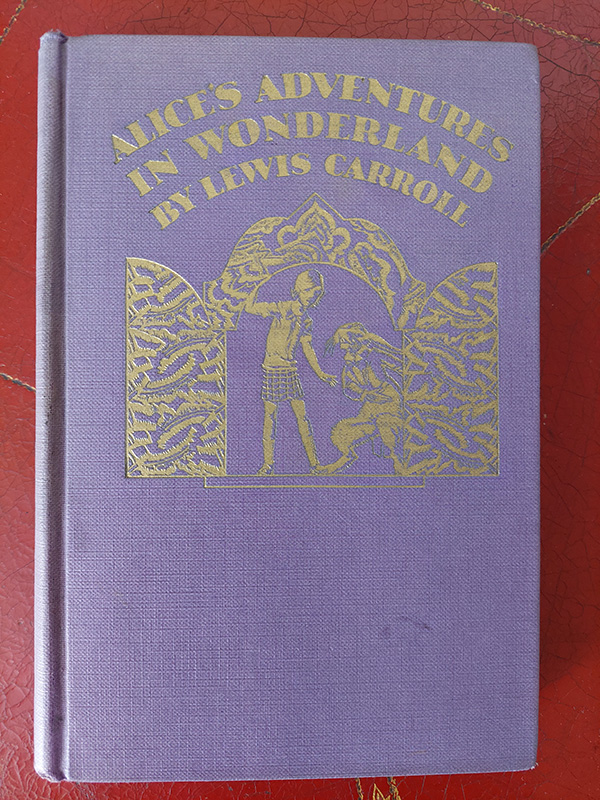
Pogany’s Alice in Wonderland was published on 1929, by E. P. Dutton & Co, in the USA. I managed to get my 1st edition copy on ebay a while ago.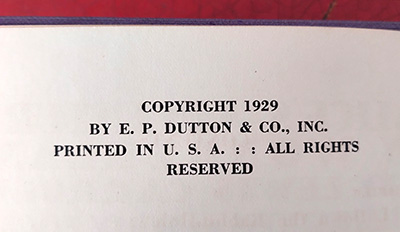
The book is rich and generious with illustrations. There are about 60+ illustrations of Alice scenes. I pictured the vast majority of those, let’s delve into the book.
The only colored illustration is in the inside cover (front and back), showcasing a collage of wonderland and its characters: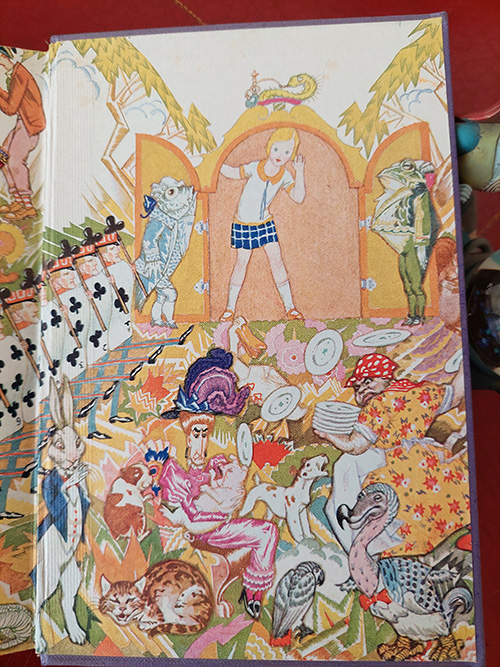
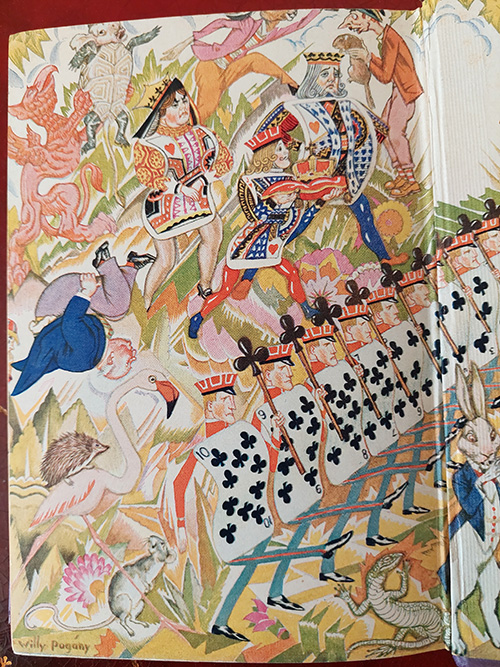
The book opens with pretty illustrations of Alice, and the Mad Tea Party. Note her short haircut, and dreamy big eyes: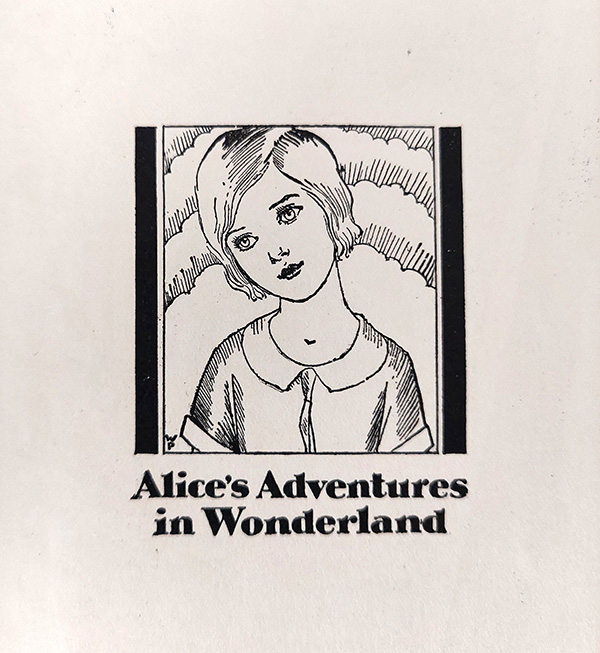

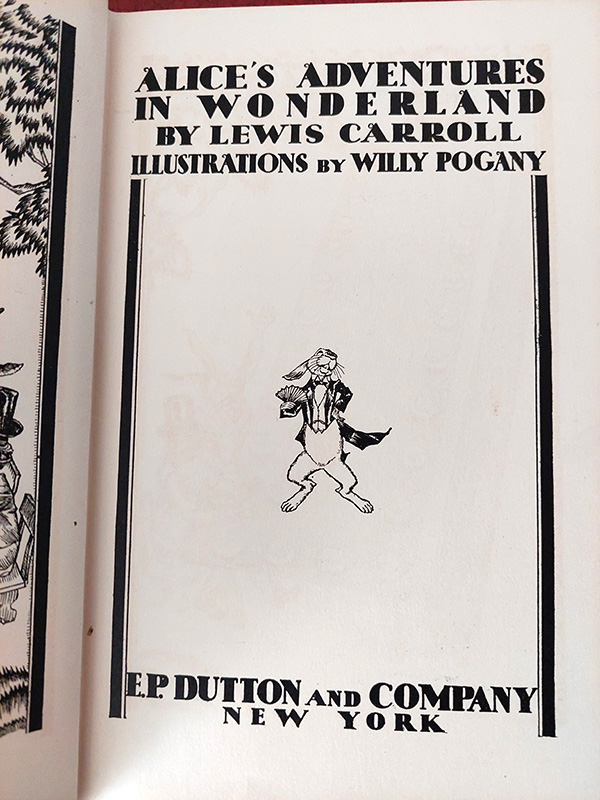

Quite a few introductory pages, easing us into the first chapter. Here we go down the rabbit’s hole.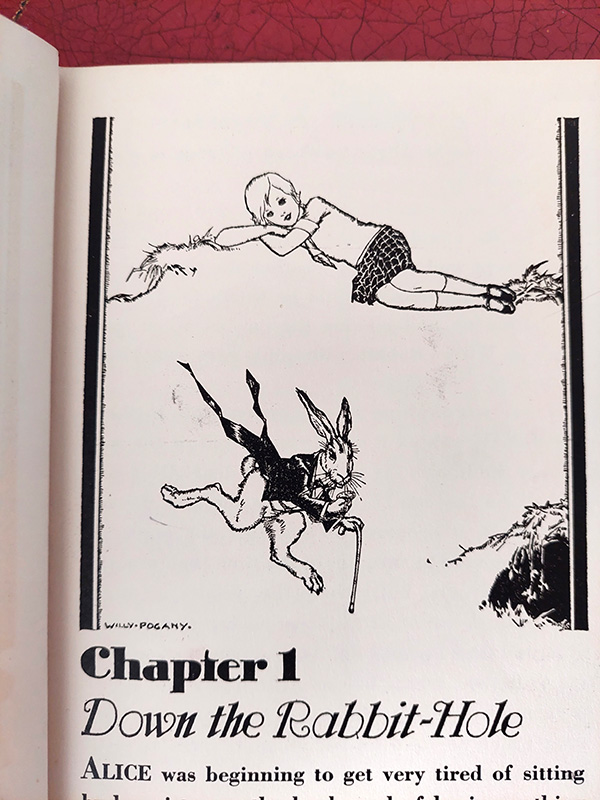
Chapter 2: The Pool of Tears
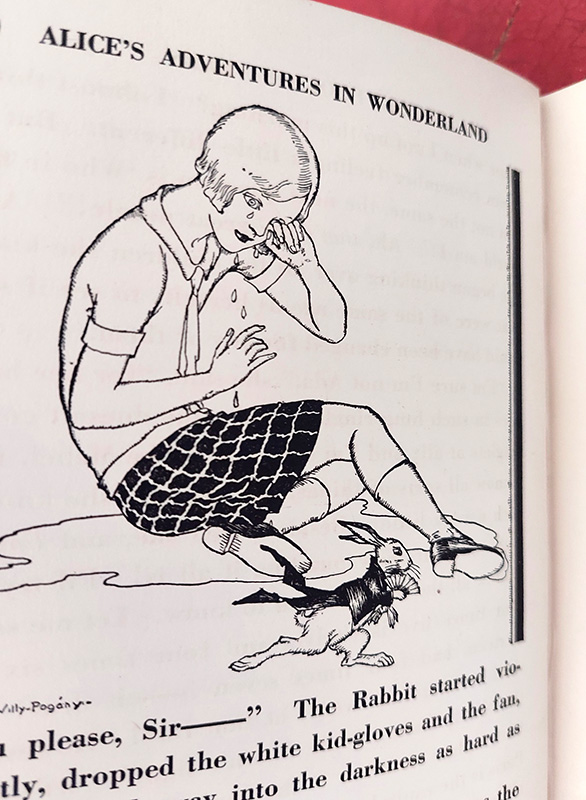
I love this illustration of Alice swimming by the mouse, in her pool of tears. The illusion of ripples is created using so few thin lines. A confident hand of a true master. 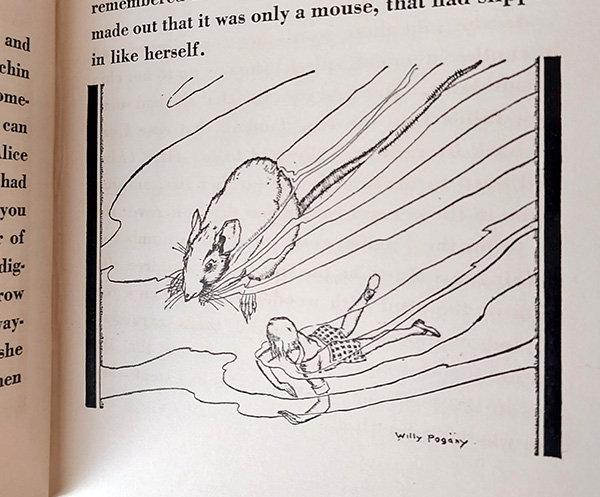
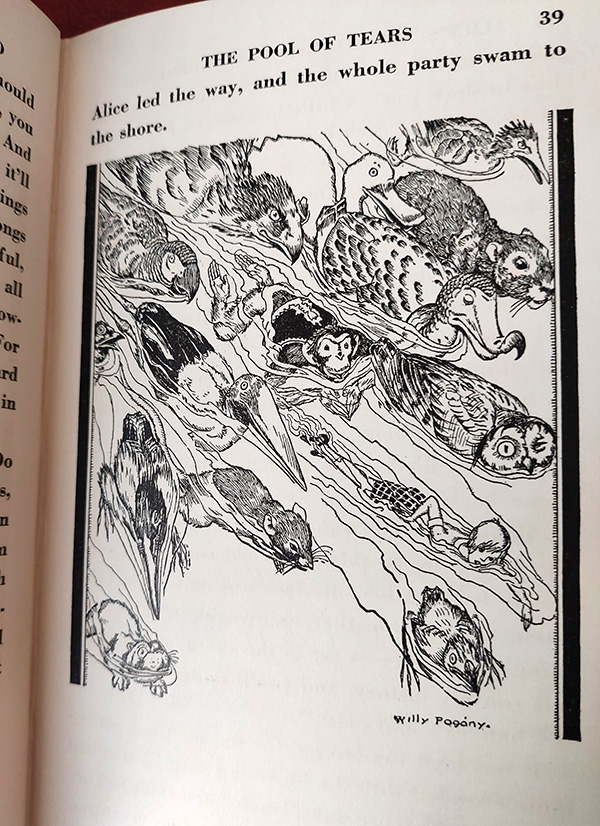
Chapter 3 – The Caucus race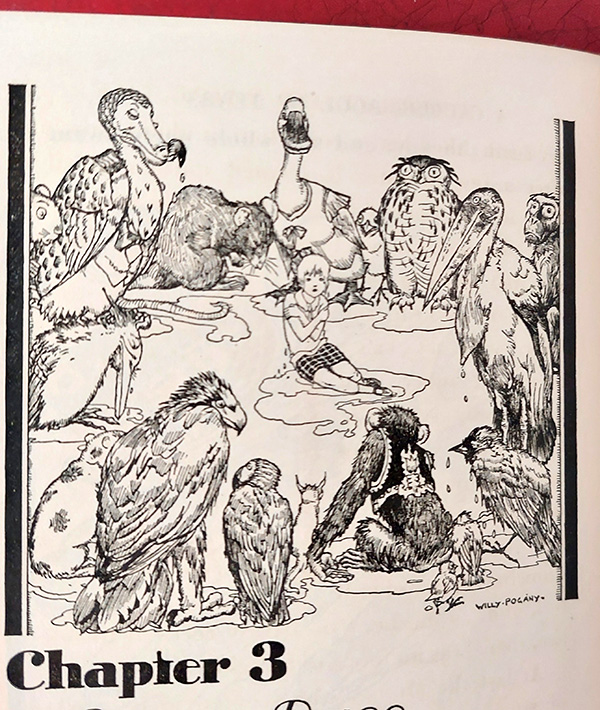
Pogany’s Alice is packed with small illustrations throughout the book. Here we have the Lory from the caucus race, followed by the duck and the Eaglet.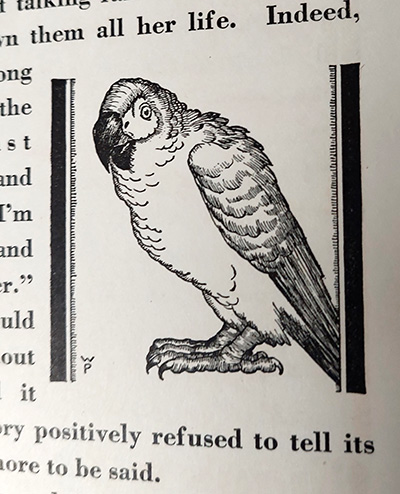
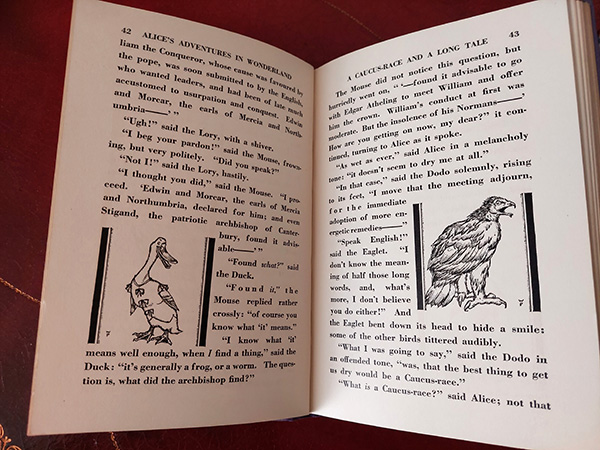
The above characters represent Alice Liddell’s sisters, Lorena (The Lory), and Edith (the Eaglet), and also Mr. Duckworth (the Duck). All present on that Golden afternoon on July 4th, 1862, when Charles Dodgson told the initial story of Alice in Wonderland. 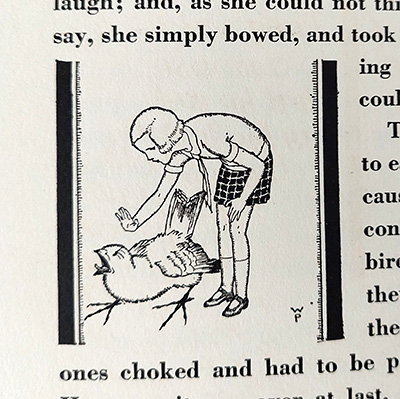
A mouse’s tale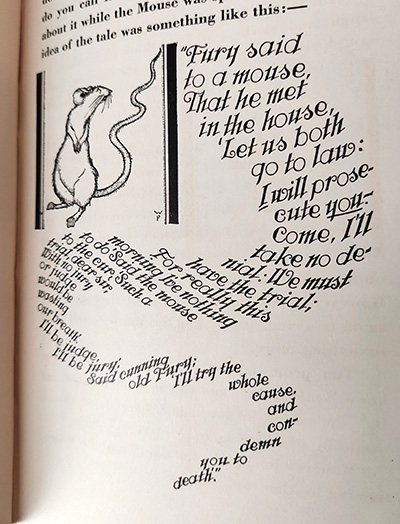
Chapter 4 – The Rabbit sends in little Bill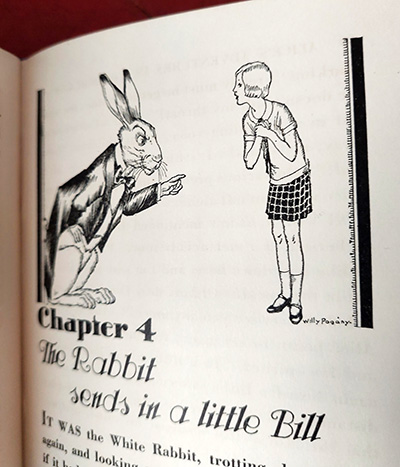
Alice in the White Rabbits house
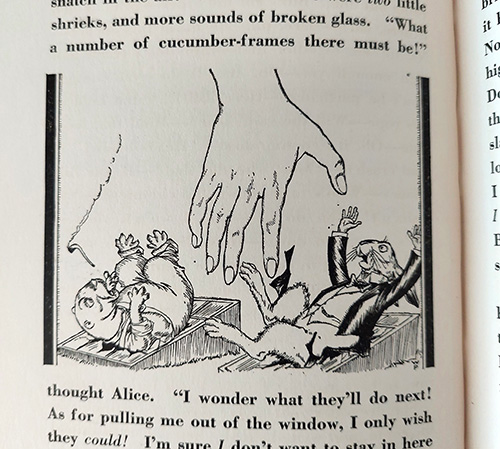
Bill the Lizard, shot out of the chimney
Alice and the puppy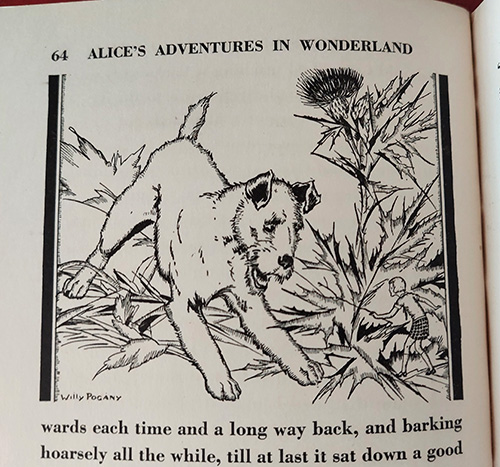
Chapter 5 – The Caterpillar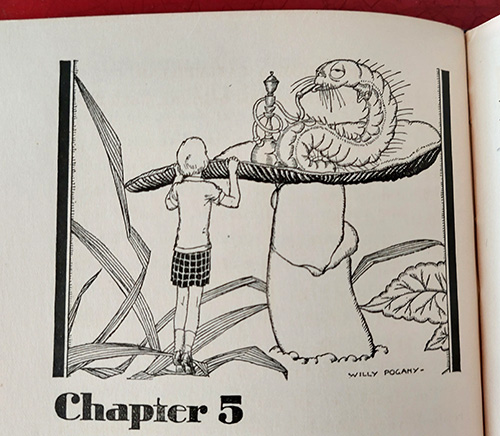
Pogany’s Caterpillar up close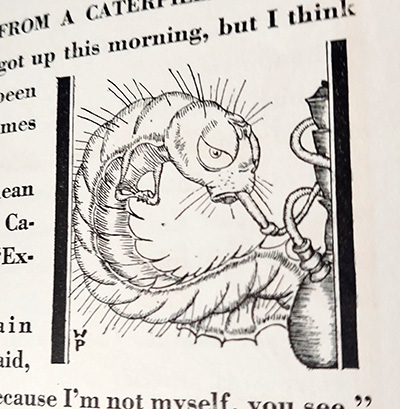
You are old father William – note how Pogany duplicated the same character illustration to portray the ‘youth’.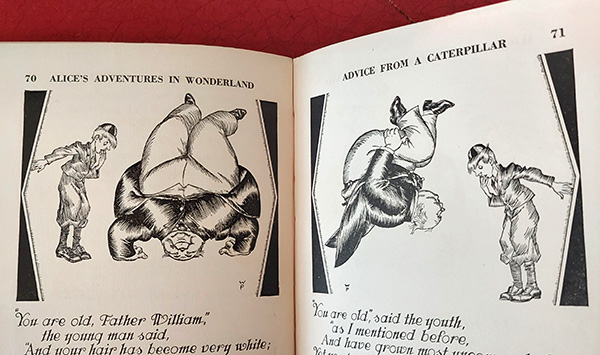
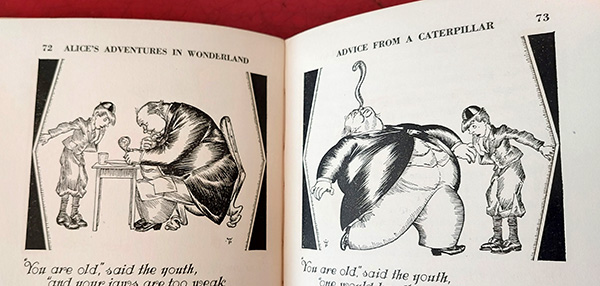
Alice scaring the bird, that sees her as a snake!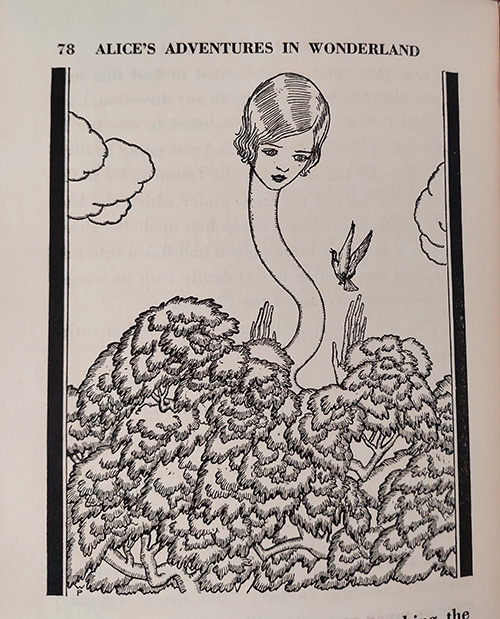
Pig and pepper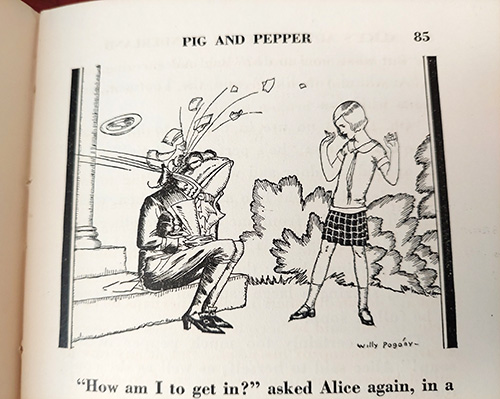
Pig and pepper main scene (next couple of photos), with the duchess and the cook, the baby and the Cheshire cat. Pogany’s masterful hand, gives us two point of views, of the same scene setting.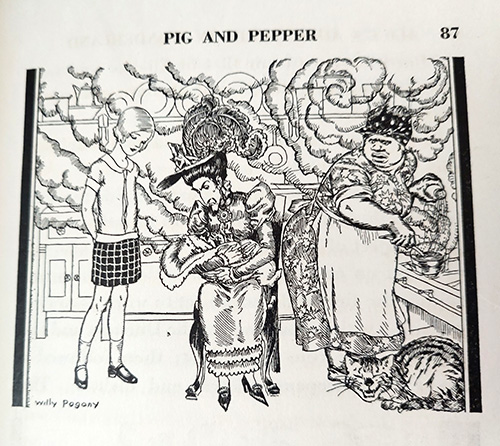
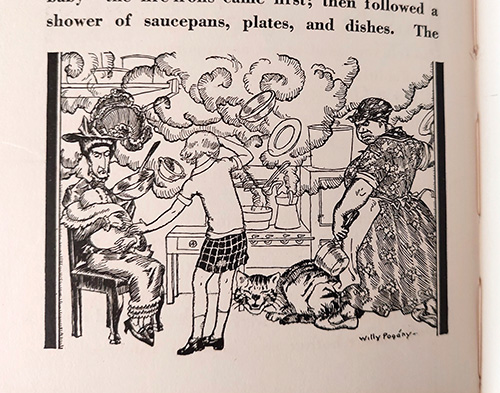
One element I love in Pogany’s Alice are the fonts. They are used to differentiate between songs, and titles. I can’t speak to the nuances, and their graphical meaning, but I can say they spark joy, and are supporting the sense of fun and freedom, that’s Wonderland. 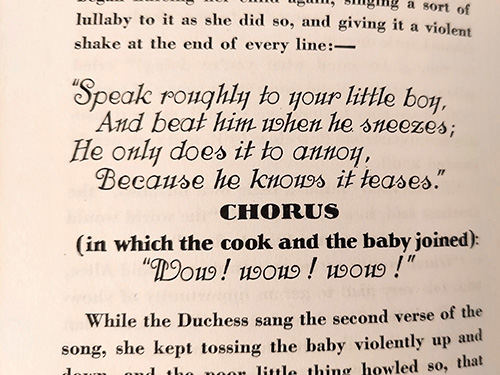
The Cheshire cat
The Cheshire cat up close. The Cheshire cat must be quite the challenge for any illustrator. How do you portray translucency. I think Pogany’s technic here, is fantastic, as well as the cat’s anatomy. He is very much a cat, but with an attitude. 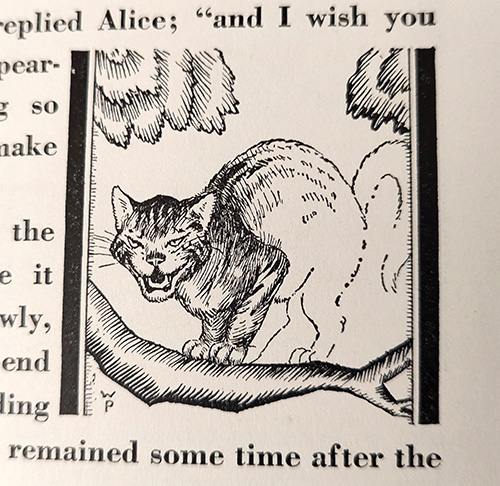
Chapter 7 – A Mad Tea Party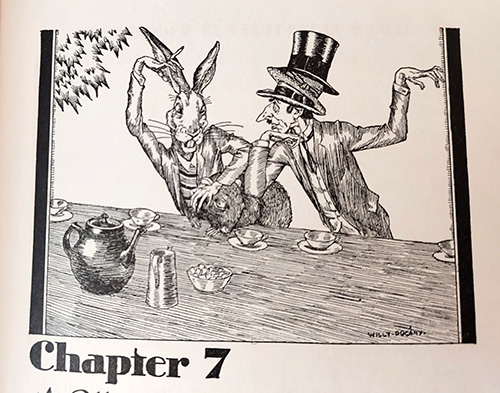
The Mad Hatter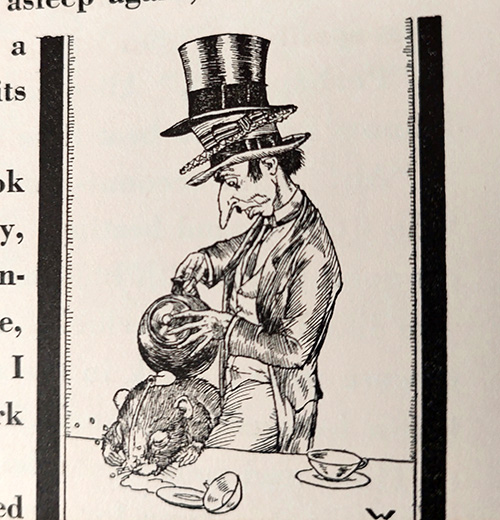
Mad Tea Party Madness continued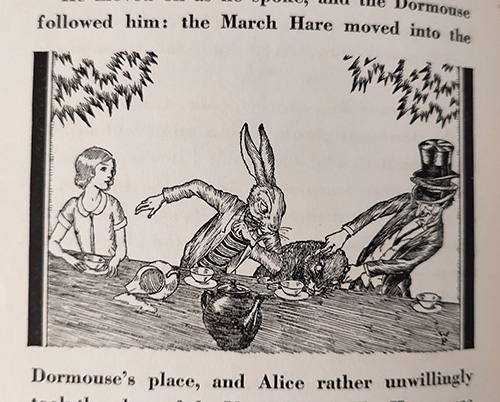
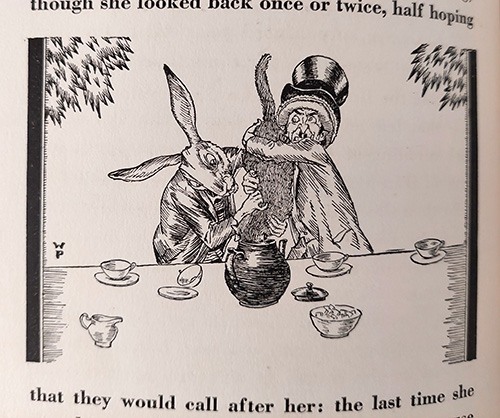
Chapter 8 – The Queen’s Croquet Ground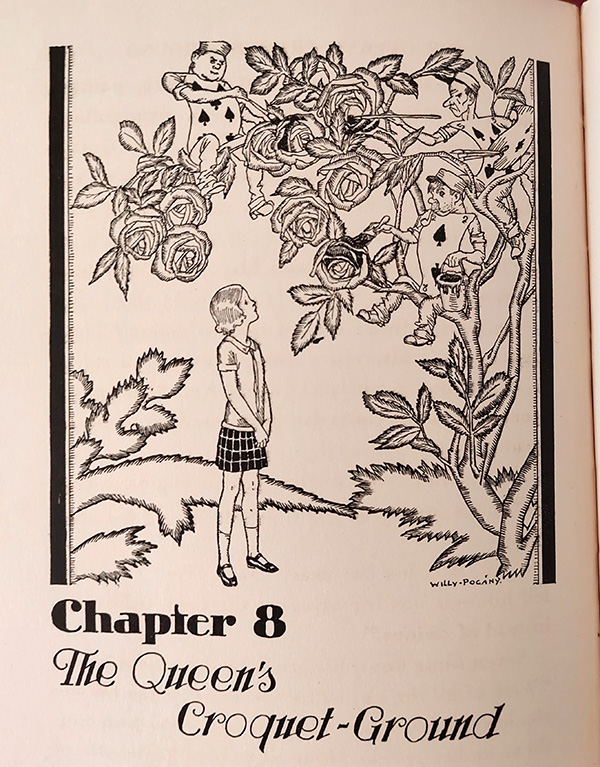
Alice and the Croquet scenes. How generous Pogany is with the amount of illustrations spread throughout the book. Count how many images are dedicated to this chapter only: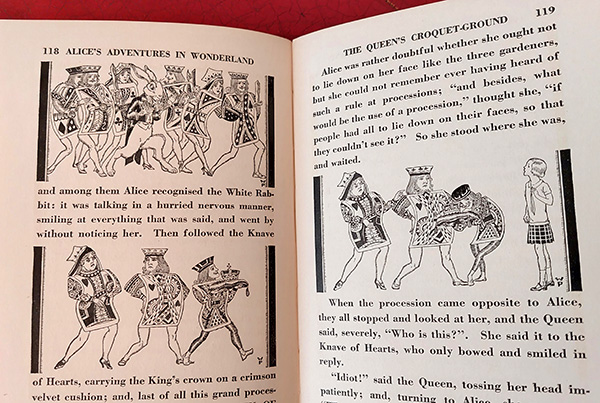
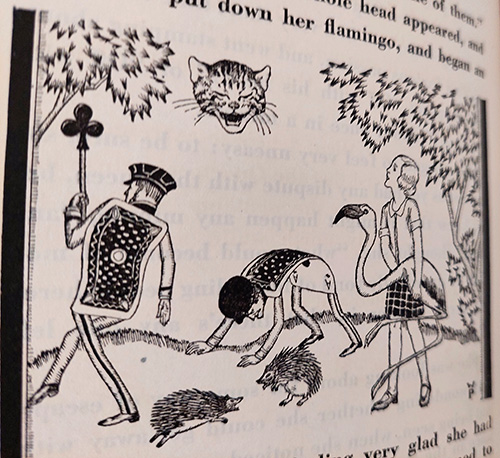

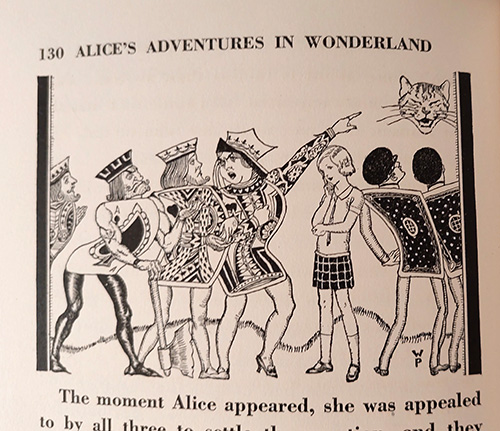
Chapter 9 – The Mock Turtle’s story
The Turtle and the Gryphon and Alice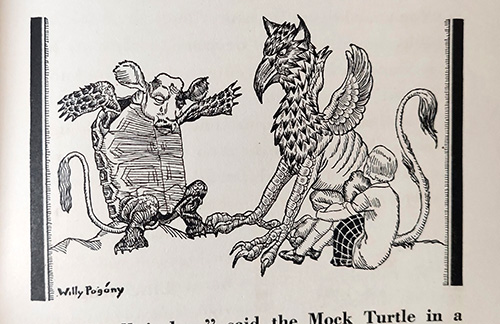
Chapter 10 – The Lobster Quadrille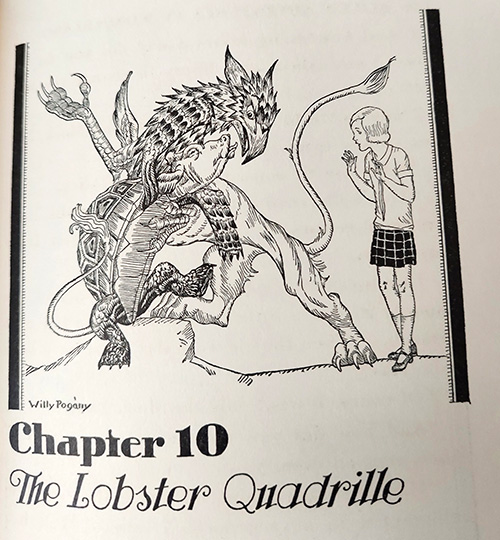
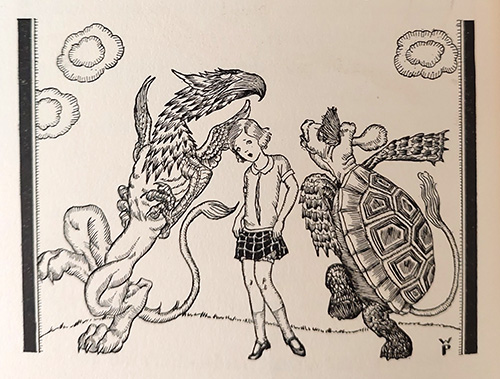
“Come on!” cried the Gryphon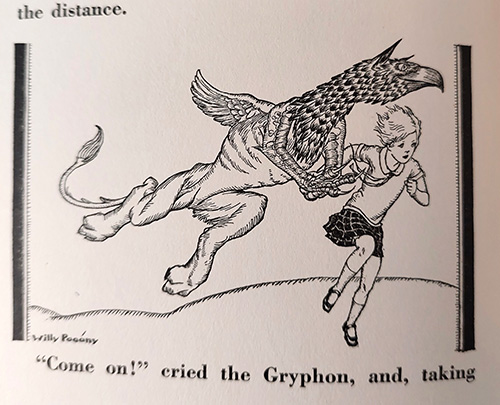
Chapter 11 – Who Stole the Tarts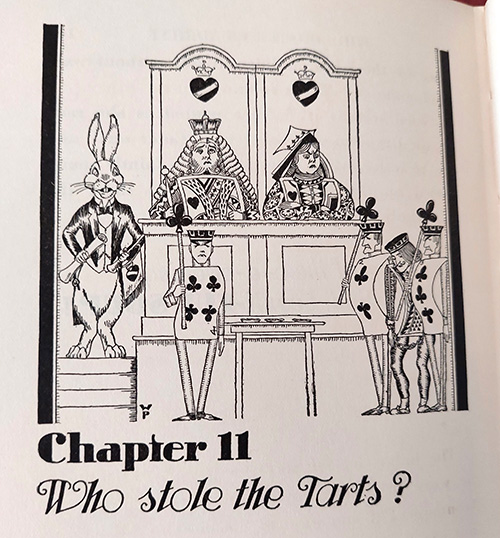
Alice sitting at the trial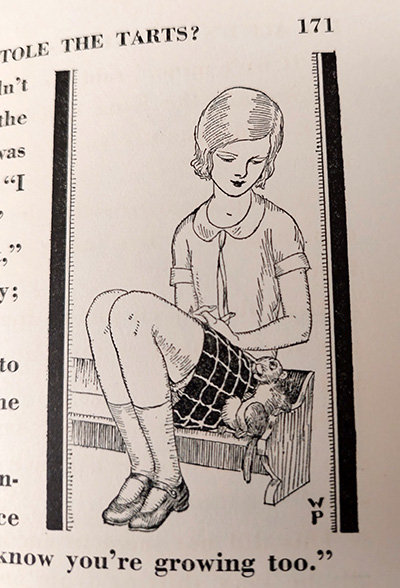
The Mad hatter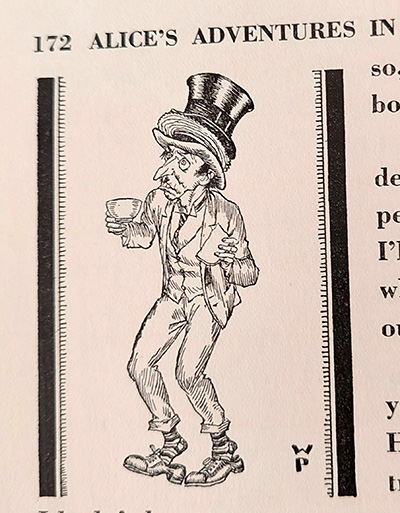
Chapter 12 – Alice’s Evidence
The White Rabbit, with the King and Queen of Hearts
Alice vs the Army of cards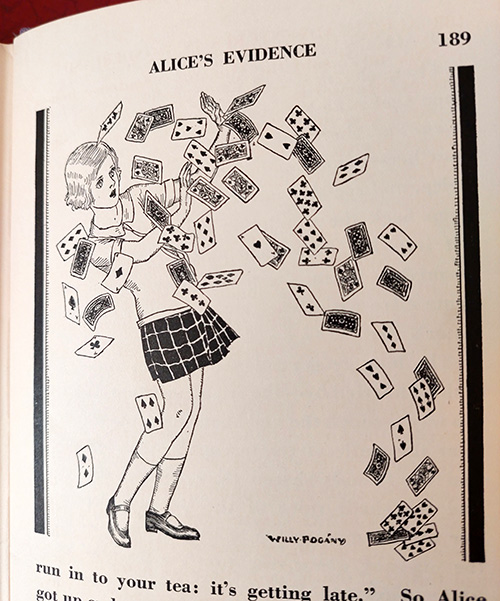
Alice leaving Wonderland
The End